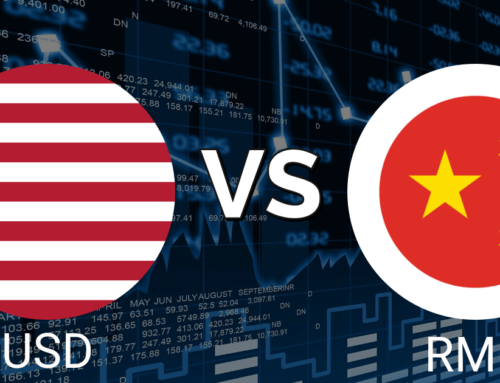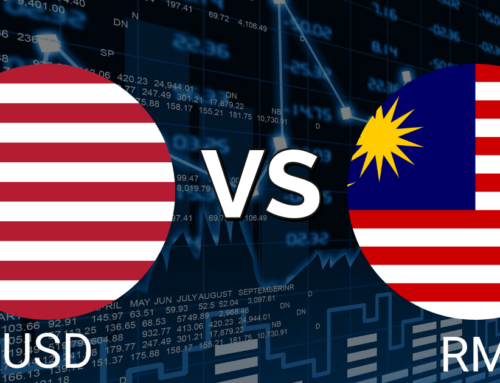
The USD and AUD have had a long history that has stretched back over 100 years. In this time, the Aussie dollar has been the stand out performer of all currencies against the US dollar for much of the period. This was especially the case in the early to mid 2000’s when the Aussie dollar was at its strongest ever against the USD.
What is AUD?
The Australian dollar is the official currency of Australia and is abbreviated as AUD. It is also used as a legal tender in several territories, including Norfolk Island, Christmas Island, and Keeling Islands. It is also valued as a legal tender by three sovereign Pacific island nations – Nauru, Kiribati, and Tuvalu today.
The Reserve Bank of Australia (RBA) is the central bank of Australia and manages AUD. The Australian dollar was introduced on February 14, 1966, replacing the Australian pound at a rate of 2 AUD to 1 GBP.
AUD History
The Australian pound was the currency of Australia until 1966, when it was replaced by the Australian dollar. The Australian currency, like the British pound, was made up of 20 shillings and 12 pence. The Australian dollar was introduced in 1910 at a parity with the pound sterling. Following a currency devaluation in 1931, its value differed from that of the pound sterling.
In 1902, a House of Representatives panel under George Edwards suggested Australia adopt a decimal currency based on the florin. In 1937, the Banking Royal Commission recommended that Australia switch to a decimal currency system.
The Decimal Currency Committee, which had been established in July 1960, stated its support for decimalization and suggested that a new currency be introduced in February 1963, based on the replacement of the South African pound with the rand.
In 1967, the pound sterling was devalued against the US dollar. However, AUD maintained its peg to the USD at a rate of 1 AUD = 1.12 USD, and thus remained part of the sterling system officially. In 1966, banknotes in denominations of $1, $2, $10, and $20 were released by the Reserve. In July 1967, the $5 bill was put into circulation, followed by the $50 note in December 1973 and the $100 note in January 1984.
The Reserve Bank of Australia debuted polymer banknotes, particularly polypropylene polymer, in 1988 to commemorate the 100th anniversary of European occupation of Australia. Australia is the first country in the world to issue polymer currency. The nation was also the first to create and utilize notes composed of polymer.
AUD in Forex Market
The new AUD polymer notes, which began with the 5 AUD note released in September 2016, will continue. On September 20, 2017, a new 10 AUD bill was put into circulation, and on October 18, 2018 , a brand-new 50 AUD note was produced.
The new $20 bill was introduced on October 9, 2019, while the new $100 note was released on October 29, 2020. Currently, bills of five, ten, twenty, fifty, and hundred AUD are in circulation. Concerning coins, 1 AUD and 2 AUD, and 5, 10, 20 and 50 cents are presently in use.
The value of the Australian dollar is highly dependent on commodity market prices, since Australia is one of the world’s largest exporters of iron ore and coal. The oil costs fell to a ten-year low during the 2015 energy crisis, while iron ore and coal prices dropped to recent lows.
The Australian dollar fell more than 15% against the US dollar and returned to equilibrium with the New Zealand dollar (NZD), a level not seen since the 1970s, as a result of which the country’s economy was severely weakened.
The role of the Australian dollar in forex trading is influenced by the country’s geography, geology, and government policy. Australia is one of the world’s wealthiest nations in terms of natural resources, including metals, steel, gems, meat, and fur. It has a significant impact on neighboring countries as well.
In 2019, the Australian dollar was the fifth most traded currency in the world, accounting for about 7% of worldwide foreign exchange transactions. The country’s economic and political stability, as well as minimal government involvement in the foreign exchange industry, contribute to its high amount of trade.
How to go from Australia to New Zealand and back with Cash
Entering and leaving Australia is free for visitors. You can bring in an infinite amount of money into and out of Australia. If the combined value of your items is more than A$10,000 Australian or foreign currency, you must declare it to an Australian Border Force or police officer.
Carrying cash across borders is a frequent money laundering technique. When traveling, you must declare physical currency or bearer negotiable instruments (BNIs).
Traveling Abroad, You must Declare Cash
When entering or departing Australia, you usually declare physical currency at the Customs examination area. You can complete the form at an international airport or seaport before leaving, or you may download and submit it.
USD News
- USD/INR gathers strength, supported by month-end, year-end US Dollar demand - FXStreeton December 27, 2024 at 2:58 am
USD/INR gathers strength, supported by month-end, year-end US Dollar demand FXStreet
- GBP/USD remains subdued near 1.2500 due to increased odds of fewer Fed rate cuts - FXStreeton December 27, 2024 at 2:29 am
GBP/USD remains subdued near 1.2500 due to increased odds of fewer Fed rate cuts FXStreet
- Gold, Silver, and AUD/USD Technical Analysis: Market Trends and Indicators - FX Empireon December 27, 2024 at 2:11 am
Gold, Silver, and AUD/USD Technical Analysis: Market Trends and Indicators FX Empire
- EUR/USD trades with mild losses near 1.0400 amid holiday quiet session - FXStreeton December 27, 2024 at 1:28 am
EUR/USD trades with mild losses near 1.0400 amid holiday quiet session FXStreet
- PBOC sets USD/CNY reference rate at 7.1893 vs. 7.1876 previous - FXStreeton December 27, 2024 at 1:18 am
PBOC sets USD/CNY reference rate at 7.1893 vs. 7.1876 previous FXStreet
AUD News
- Gold, Silver, and AUD/USD Technical Analysis: Market Trends and Indicators - FX Empireon December 27, 2024 at 2:11 am
Gold, Silver, and AUD/USD Technical Analysis: Market Trends and Indicators FX Empire
- Japanese Yen and Australian Dollar News: BoJ and China Profits in Focus - FX Empireon December 26, 2024 at 11:12 pm
Japanese Yen and Australian Dollar News: BoJ and China Profits in Focus FX Empire
- AUD/USD weakens to near 0.6200 amid thin trading - FXStreeton December 26, 2024 at 11:07 pm
AUD/USD weakens to near 0.6200 amid thin trading FXStreet
- United Cup prize money: How much players earn, total pool, winnings and rankings points for 2025 - Sporting Newson December 26, 2024 at 8:00 pm
United Cup prize money: How much players earn, total pool, winnings and rankings points for 2025 Sporting News
- 2025 AUD/USD Technical Outlook Preview - Forex Factoryon December 26, 2024 at 5:50 pm
2025 AUD/USD Technical Outlook Preview Forex Factory


